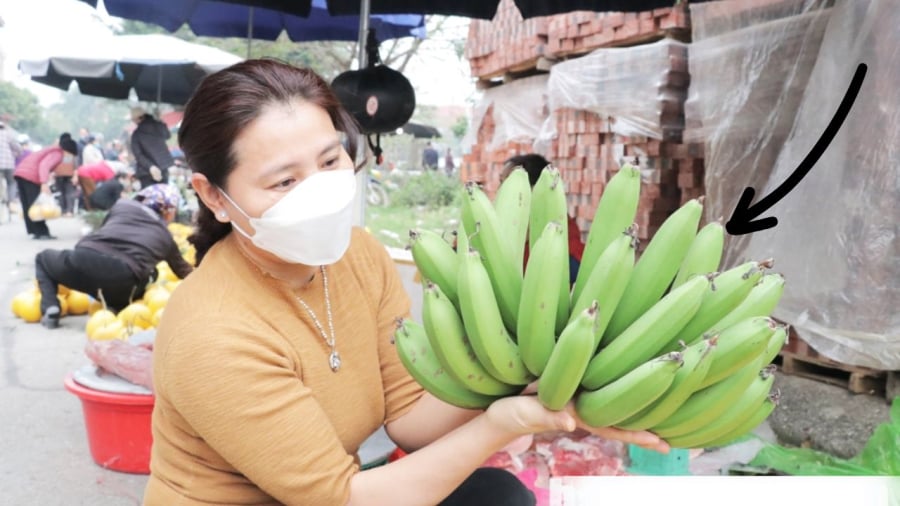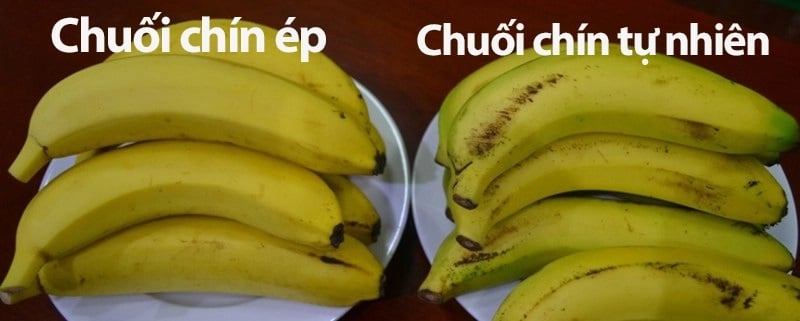From ancient times until now, on special occasions like Tet or the first day of the lunar month, Vietnamese families often have the custom of worshiping their ancestors. And one of the familiar fruits on the ancestral altar is the whole bunch of bananas.

Why are single bunches of bananas more expensive?
However, not every banana can be chosen on the altar to worship the ancestors. Bunches of equal, beautiful, and green bananas will always be given top priority.
Moreover, a bunch of bananas with an odd number of fruits will be chosen for worship by many people. Therefore, on Tet occasions, bunches of bananas with odd numbers of fruits like 15, 17, 19, 21… will cost from 200,000 VND or more at the markets. The more fruits a bunch has and the more odd-numbered fruits it has, the more expensive it will be.
However, not everyone knows why bunches of bananas with odd-numbered fruits are chosen by many people and are more expensive than usual.
Through research, according to feng shui, even numbers are negative and odd numbers are positive, even numbers are not good. Besides, bananas are considered even numbers, so we need odd numbers. That’s why bunches of bananas with odd-numbered fruits are often more expensive than those with even-numbered fruits.
Furthermore, due to the majority of people’s preference for odd numbers, odd numbers are symbolic of vitality, so odd numbers are chosen for lighting incense or placing flowers.
People often have the habit of lighting incense with even numbers, 3 incense sticks are for worshipping Heaven, Earth, and Man, and 5 incense sticks are for worshipping the 5 virtues of humanity: benevolence, righteousness, propriety, wisdom, and sincerity. The preference for odd numbers is the preference for vitality.
Similarly, bunches of bananas chosen for worship also often have an odd number of fruits.
How to differentiate and identify ripe bananas using chemicals?
Women often worry about bananas that are ripened using chemicals, but there is nothing that can be proven. Every seller advertises that their bananas are naturally ripened, but there are still ways for you to figure it out.

How to differentiate:
– Bananas ripened with chemicals have beautiful colors on the skin, which everyone likes, but the unusual point is that the stem and the tip of the skin have a green color, not the yellow color like the skin of the fruit. If the bananas ripen naturally, they will have a uniform yellow color from the tip to the stem.
– If you observe the skin, you will also notice some differences. Naturally ripened bananas will have a dark yellow color and black spots, brown spots… However, when you lightly squeeze the ripened bananas, they don’t feel soft even though the skin is ripe and pleasing to the eye. Besides, the ripened bananas will have a bright yellow skin, not a deep yellow color, and there will be no brown or black spots on the skin.
– When you lightly squeeze the bananas, you won’t feel their softness, and when you peel the skin to eat, you won’t feel the sweet and aromatic taste of ripe bananas. Ripened bananas are stimulated to ripen early before the internal elements can create softness like naturally ripe bananas.

































